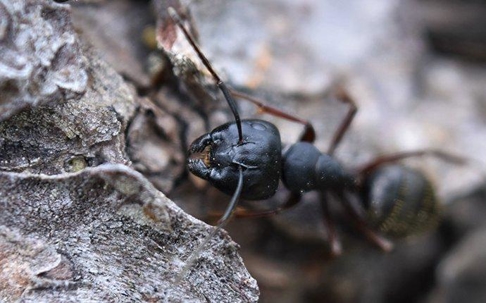Ants may not seem like a big deal, but when they get into your Bay Area home or business, they are not only a nuisance, but can also cause problems for your family, customers, employees, and the building itself. To protect your property, you need a step-by-step guide to effective ant control.
The Types Of Ants That Are Most Common In The Bay Area
There are over 12,000 species of ants worldwide, but far fewer are likely to infest your Bay Area property. In our part of the world, three types of ants are the most common invaders of homes and businesses.
Argentine Ants
Argentine ants are small, usually not growing to more than a quarter of an inch in length. Having a dark brown to black color, they are often discovered as they make their way into your home or business in a wide and noticeable trail.
As foragers, Argentine ants often enter a building in search of food. However, if outdoor conditions become too cold or dry, they are known to enter a building to nest in warm, moist areas, such as in potted plants or under sinks.
Although more of a nuisance than a real danger, Argentine ants can pick up dangerous pathogens as they walk over trash, sewage, or dead animals. They can then spread these germs to humans by contaminating countertops or food.
Odorous House Ants
Even smaller than Argentine ants, odorous house ants only grow to about an eighth of an inch long. They are also brown to black. They get their name from the rotten coconut smell they give off when crushed.
Odorous house ants love sweet foods and tend to move their nests frequently, so they often end up inside homes and businesses. They prefer moist environments, such as close to leaky pipes.
Like Argentine ants, odorous house ants aren’t extremely dangerous to humans, but they can contaminate your food, and you should try to avoid them.
Carpenter Ants
Carpenter ants are much larger than Argentine and odorous house ants, growing to over half an inch long. They are usually red, black, or a combination of the two.
Carpenter ants get their name because they chew through wood in order to build their nests. These ants don’t eat wood but chew through it to dig tunnels and nesting areas. They prefer wet, damaged wood, but will also dig tunnels through dry, sound wood.
Although not a health threat, carpenter ants are a dangerous pest to have in your Bay Area home or business. As they dig their tunnels, they weaken the wooden structures in the building. Over time, this can lead to serious damage that can threaten the safety of the building.
A Step-By-Step Guide To Effective Ant Control For Your Bay Area Property
Although most ants are considered nuisance pests, they all bring at least a small level of risk with them into your home or business. Preventing them from getting inside is the key to effective ant control.
By understanding what attracts ants into your home or business, you can reduce these attractants and avoid ant infestations.
1. Limit Food Options For Foraging Ants
Many ants first find their way into your home or business while searching for food. By not giving them what they’re looking for, you can stop them from returning.
- Store all food in airtight containers or the refrigerator. Do not leave food uncovered or out on the counter.
- Check your pantry and cupboards regularly for spilled or leaking food items.
- Clean up any mess that you find.
- Store pet food in airtight containers.
- Remove trash from your home or business daily.
- Clean up crumbs, spills, messes, and dishes after every meal.
- Limit outdoor food sources by covering outdoor garbage bins with tightly fitting lids.
2. Address Moisture Issues In Your Home Or Business
When ants look for a place to nest, they look for areas with moisture. By eliminating these areas in your home or business, you can make your structure unsuitable for ants.
- Reduce humidity in your building through the use of fans and dehumidifiers if necessary.
- Check regularly for leaking pipes and faucets. Fix any problems that you find.
- Check regularly for water-damaged wood. Replace any that you see.
- Look outdoors around your property for excess moisture, especially right around the perimeter of your building, and find ways to reduce any that you find.
3. Seal Up Potential Entry Points
Ants are small and can fit through seemingly impossible spaces. However, that doesn’t mean you shouldn’t try to seal as many potential points of entry as possible.
- Carefully check around the exterior of your building for cracks, holes, gaps, and crevices. Seal any that you find.
- Look at all your doors and windows for gaps around the casings, as well as holes or tears in the screens. Fix any that you find.
- Consider installing door sweeps on exterior doors.
- Cut back tree limbs, shrubbery, and bushes that touch the building. These act as a bridge to allow ants to crawl to your home or business.
What To Do If Ants Have Already Gotten Into Your Bay Area Home Or Business
If you are finding ants inside your home or business, you should not ignore them. Although some may not cause serious problems, others will, and all can contaminate your food stores. Furthermore, if they choose to nest inside, the problem will only grow bigger and bigger.
If ants have gotten into your house or business facility, you need the help of Bay Pest. Our ant control services will get to the root of your ant infestation to fully eliminate the problem. Contact us to schedule an appointment today.

